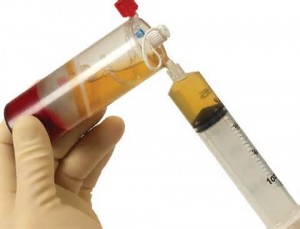The search for a ‘magic serum’ that has the ability to rejuvenate the face and its overlying skin is both an unsolved hope and an endless quest. There are more topical creams and lotions that allege to create more youthful skin that one could ever purchase. But attention recently has turned to injectable options to be placed under the skin. The use of synthetic injectable fillers has been around for more than ten years and their effects, profound as they may be, are not permanent and the evidence is weak that they cause any real skin changes.

There have been few well controlled clinical studies that have evaluated the effects of PRP on facial rejuvenation in an objective scientific manner. In contrast, there is a large amount of marketing and hype that has surrounded such PRP facial injections. As with many aesthetic treatments largely driven by economic gain, marketing often gets way ahead of actual scientific proof. But of the handful of clinical aesthetic PRP injections, skin texture improvement and wrinkle reductions were seen and patient satisfaction with the treatments are usually more favorable than unfavorable. Despite reported patient satisfactions, I find that most of the before and after pictures of the patients in these clinical articles as underwhelming.
One highly important variable in any PRP treatment, aesthetic or otherwise, is dose. More specifically, what was the platelet concentration that was used and were the platelets truly viable? Most experimental studies have shown that it takes at least a 4X to 5X increase over one’s baseline platelet concentration to get a clinical response. Whatever devices that a clinician may use has to minimally obtain these concentrations to have any hope at being effective. The other important issue is that it likely takes a series of treatments, pulsed dosing if you will, to get a really significant clinical response. What that frequency should be and the practicality of it are unknown issues at present.
Because the effects of PRP may not be immediately evident (after the small amount of swelling subsides), some clinicians and manufacturers use a treatment approach that combined the PRP with either a collagen matrix or with off-the-shelf injectable fillers. Either approach makes more sense both biologically and clinically and is what I currently use in my practice. There are advantages to either approach and it ultimately comes down to the cost of the adjunctive filler as well as the volume needed for the injection treatment. The filler provides the benefit of an immediate and sustained response by volumetric expansion.
The simplest and most inexpensive filler is to use the patient’s own fat as part of the PRP injectate. In this approach the PRP really becomes the adjunctive part and the fat is by volume the largest component. Despite the appeal of this approach, it has not yet been conclusively shown that it is better than fat injections alone. One experimental study has shown that there was no demonstrated improvement with PRP-fat mixtures. Based on the volume of PRP to fat, it seems more likely that it would be more effective in smaller volume facial fat injections that larger body procedures.
Is PRP the ‘magic serum’ that we seek for autologous aesthetic enhancements? The evidence to prove it and the best technique to achieve it remain elusive. But the appeal of PRP remains. In certain wounds, PRP has illustrated the ability of the body to ‘heal itself’. But in aesthetic improvements the ability to make yourself ‘grow younger’ has not yet been realized.
Dr. Barry Eppley
Indianapolis, Indiana


